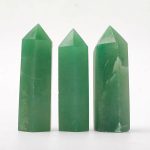What is Chalcedony?
Chalcedony, a member of the quartz family, is a captivating gemstone renowned for its ethereal beauty and diverse hues. It is composed primarily of silicon dioxide (SiO2) and exhibits a microcrystalline structure, giving it a translucent to opaque appearance. Chalcedony commonly forms in cavities and veins of igneous or sedimentary rocks, where it crystallizes from hydrothermal solutions.

A Palette of Colors
Chalcedony boasts an impressive range of colors, encompassing white, gray, blue, pink, green, red, and yellow. Each hue is attributed to the presence of trace elements or impurities within the mineral’s composition.
- White Chalcedony: Also known as common chalcedony, this pure white variety is the most abundant.
- Blue Chalcedony: This enchanting gemstone owes its celestial blue color to the inclusion of small amounts of copper.
- Pink Chalcedony: This delicate pink gemstone is colored by manganese impurities.
- Green Chalcedony: Known as chrysoprase, this vibrant green gemstone contains nickel.
- Red Chalcedony: This fiery red gemstone, known as carnelian, is colored by iron oxide.
Unique Varieties of Chalcedony
Beyond its diverse colors, chalcedony showcases a spectrum of unique varieties, each with distinct characteristics and applications:
- Agate: This banded gemstone features alternating layers of chalcedony in various colors.
- Jasper: This opaque, multicolored gemstone contains a significant amount of impurities, such as iron oxides.
- Onyx: This banded gemstone alternates between black and white chalcedony layers.
- Bloodstone: This deep green gemstone contains inclusions of red jasper, resembling drops of blood.
- Moss Agate: This opaque gemstone contains dendritic inclusions that resemble moss or fern patterns.
Historical Significance and Cultural Beliefs
Chalcedony has played a significant role in human history and across cultures:
- Ancient Egypt: Chalcedony was used to create intricate jewelry and amulets, believed to possess healing and protective powers.
- Ancient Greece: Chalcedony was associated with the goddess Gaia and was worn as a symbol of fertility and growth.
- Roman Empire: Chalcedony was a popular gemstone for ring stones and seals, believed to bring success and prosperity.
- Middle Ages: Chalcedony was commonly used in religious artifacts and jewelry, symbolizing purity and spiritual enlightenment.
Benefits of Chalcedony
Chalcedony is not only aesthetically pleasing but also attributed with various therapeutic benefits:
- Emotional Balance: Chalcedony is believed to promote emotional stability, reduce stress, and alleviate anxiety.
- Communication: This gemstone is said to enhance communication skills, both verbal and non-verbal.
- Physical Healing: Some believe that chalcedony aids in healing wounds, relieves sore throats, and improves blood circulation.
- Spiritual Growth: Chalcedony is associated with the throat chakra, believed to facilitate spiritual growth and connection to one’s higher self.
Applications of Chalcedony
Chalcedony’s versatility extends beyond jewelry, making it a sought-after material for various applications:
- Jewelry: Chalcedony is widely used in jewelry, ranging from delicate earrings to statement necklaces.
- Decorative Arts: Intricate carvings, vases, and sculptures made from chalcedony showcase its beauty and durability.
- Laboratory Equipment: Chalcedony is prized for its unique optical properties and is used in precision scientific instruments.
- Construction: Chalcedony is a component of concrete and mortar, enhancing their strength and durability.
- Glass Production: Chalcedony is an essential ingredient in the production of certain types of glass, adding clarity and brilliance.
Exploring New Horizons: Chalcedony’s Innovative Applications
The potential applications of chalcedony are limitless, inspiring researchers and designers to explore its versatility in various fields:
- Medical Imaging: Chalcedony-based nanoparticles are being investigated for use in medical imaging, offering enhanced contrast and sensitivity.
- Energy Storage: The unique electrochemical properties of chalcedony make it a promising material for energy storage devices, such as batteries and supercapacitors.
- Nanotechnology: Chalcedony’s ability to form nanostructures with tailored properties opens up possibilities for novel applications in electronics, optics, and medicine.
- Water Treatment: Chalcedony-based filters have shown promising results in removing pollutants and bacteria from water sources.
- Architecture and Design: Chalcedony’s aesthetic appeal and durability make it an intriguing material for architectural facades, interior design, and furniture.
Table 1: Physical Properties of Chalcedony
| Property | Value |
|---|---|
| Chemical Composition | SiO2 |
| Crystal Structure | Microcrystalline |
| Mohs Hardness | 6.5–7 |
| Refractive Index | 1.53–1.55 |
| Density | 2.60–2.64 g/cm3 |
Table 2: Chalcedony Varieties and Their Colors
| Variety | Color |
|---|---|
| White Chalcedony | White |
| Blue Chalcedony | Blue |
| Pink Chalcedony | Pink |
| Chrysoprase | Green |
| Carnelian | Red |
Table 3: Historical and Cultural Significance of Chalcedony
| Era | Culture | Belief |
|---|---|---|
| Ancient Egypt | Egyptians | Healing and protective powers |
| Ancient Greece | Greeks | Fertility and growth |
| Roman Empire | Romans | Success and prosperity |
Table 4: Benefits of Chalcedony
| Benefit | Associated Effect |
|---|---|
| Emotional Balance | Reduces stress and anxiety |
| Communication | Enhances verbal and non-verbal communication |
| Physical Healing | Aids in wound healing and sore throats |
| Spiritual Growth | Facilitates connection to one’s higher self |




























